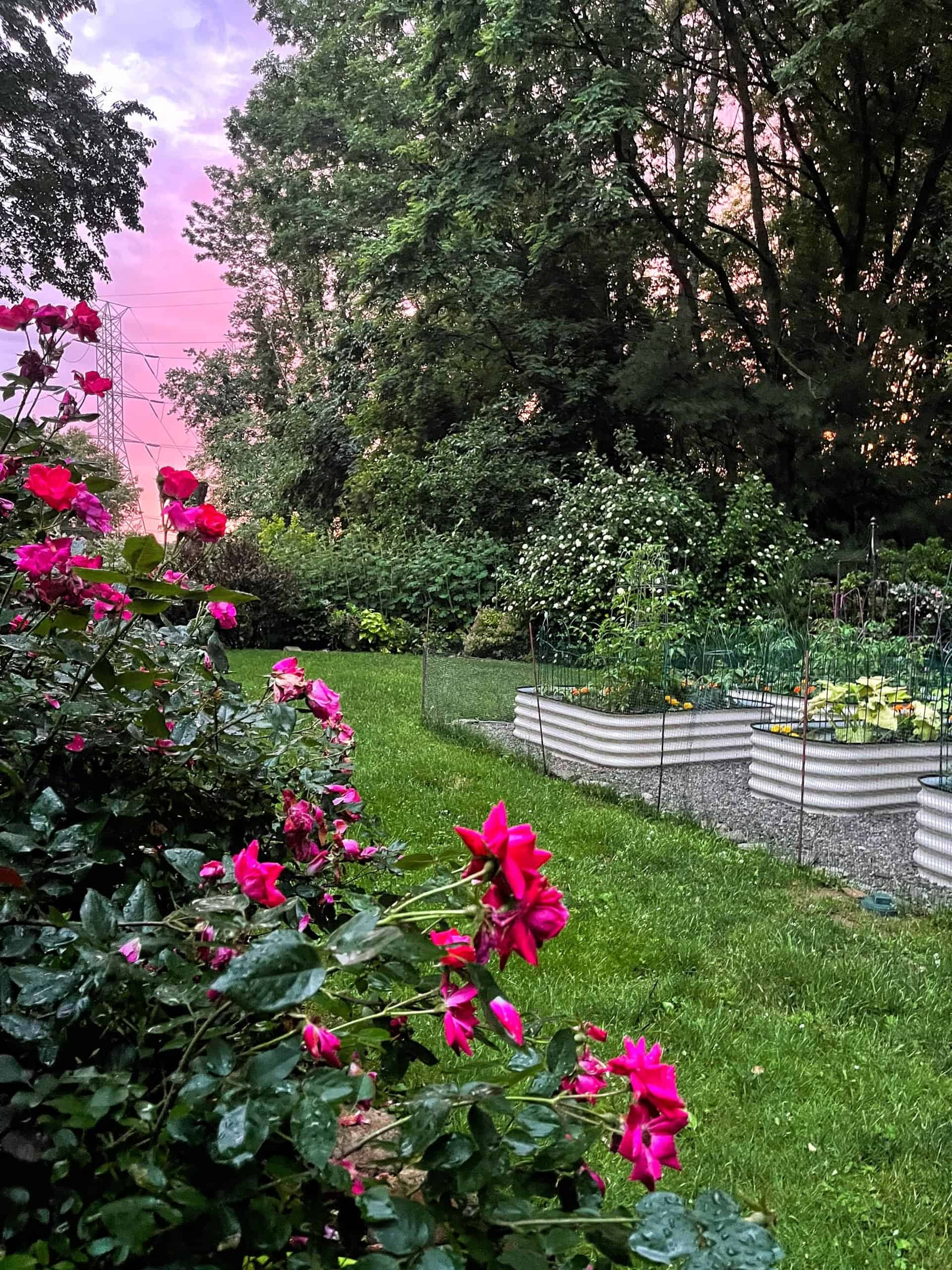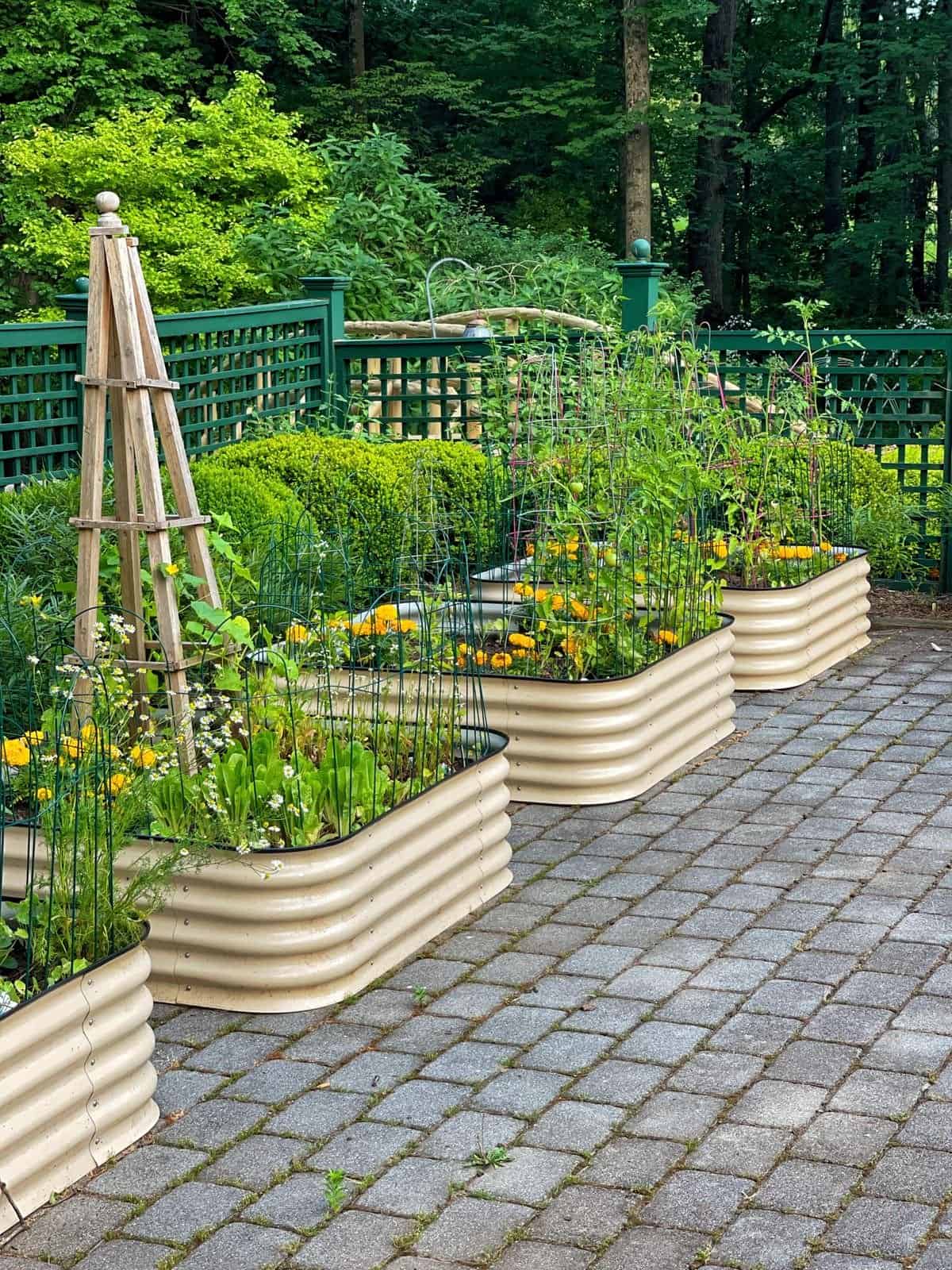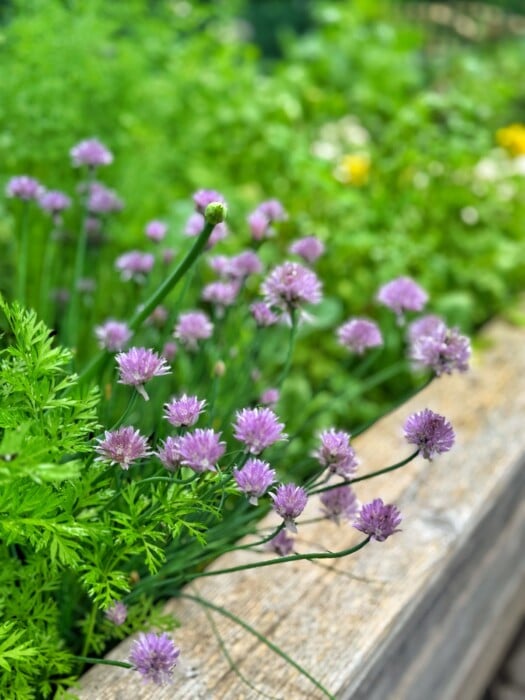Crispy, refreshing cucumbers at your fingertips! Learn how to grow cucumbers in your garden with these expert tips on soil preparation, planting, care, and pest management.
Growing cucumbers in your vegetable garden can be a rewarding experience, providing you with a bountiful harvest of fresh, crisp cucumbers perfect for salads, pickling, and summer snacks.
Whether you are a seasoned gardener or a beginner, understanding the essentials of cucumber cultivation will help you achieve the best results. In this guide, we’ll chat about key steps to successfully grow cucumbers, from selecting the right variety and preparing your soil to planting, caring for, and harvesting your crop.
With these tips, you’ll be well on your way to enjoying delicious, home-grown cucumbers all season long.
Have you grown them before? Here are some best practices for growing cucumbers.
(Posts on stacyling.com may contain affiliate links. Click HERE for full disclosure.)

Introduction to Growing Cucumbers
Cucumbers, also known as Cucumis sativus, are common vegetables that can easily be grown at home in the vegetable garden. They are fabulous when pickled, eaten raw, or in salads and grow best in warm weather.
Where I live, my Jersey garden produces the best cucumber crops from July through September. Cucumber varieties can be either long vines or bush varieties.
I enjoy growing the vine varieties and allow them to grow up a fence, trellis, or obelisk to save growing space in my vegetable garden. Trellising cucumbers also encourages better air circulation, fruit production and improves overall plant health.
Are Cucumbers a Fruit?
Botanically speaking, cucumbers are considered a fruit because they develop from the flower of the cucumber plant and contain seeds. However, in common culinary usage, cucumbers are often considered a vegetable because they are typically used in savory dishes and are not as sweet as many other fruits.
Ultimately, whether cucumbers are considered a fruit or a vegetable may depend on the context in which they are being discussed. Many people think of cucumbers as a vegetable, yet they are considered to be a fruit because they start from seed and grow from the plant’s flowers. Cucumbers also fall within the squash and pumpkin families, which are also classified as fruits.

Best Soil and Planting Methods for Growing Cucumbers
Growing cucumbers in your garden can be a fun and rewarding experience, whether you are a seasoned or beginner gardener. Cucumbers are a popular option to grow in the vegetable garden that are not only delicious and refreshing, but also super easy to grow. With the right conditions and a little bit of care, you can grow your own fresh and tasty cucumbers right in your backyard. Learn how to grow cucumbers with these simple tips.

How to Grow Cucumbers: Preparing the Soil
For optimal cucumber growth, start by selecting a planting site that receives full sun for at least 6-8 hours daily in well draining soil. Before planting, test your soil’s pH and nutrient levels. Amend the soil with compost or well-rotted manure to enhance fertility and organic matter content, ensuring the soil is rich and loamy.
When planting any garden, it is so important to test your soil. Understanding soil conditions and making improvements to the soil is the best way to grow happy, healthy plants.
Where cucumbers are concerned, they grow best in a soil ph between 6.0-6.5. What does that mean? Cucumbers prefer slightly acidic soil that is moisture-retentive yet well-draining.
To improve your soil, add manure or compost in spring and fall, and avoid using weed and feed fertilizers. And stick to more organic fertilizers like this one.
If you grow cucumbers and other vegetables in raised garden beds, you’ll have more control over the quality of the soil.

How to Grow Cucumbers: Methods for Planting Cucumbers
Cucumbers can be started by seed indoors or sown directly in the garden. You can also purchase plants ready to go into the garden from your local nursery. It’s best to direct sow cucumbers after all danger of frost has passed.
Always follow the seed packet’s sowing directions but in general, sow seeds about 1/2 inch deep. And after seedlings sprout, thin plants to roughly 8-12 inches apart.
Direct Sowing
- Timing: Sow cucumber seeds directly in the garden after the last frost date, when the soil has warmed to at least 70°F (21°C).
- Watering: Water the seeds immediately after planting to ensure the soil is consistently moist.
Transplanting Seedlings
- Starting Indoors: If starting seeds indoors, sow them in cell trays or pots 3-4 weeks before the last expected frost. Maintain a soil temperature of 70°F (21°C) for optimal germination.
- Transplanting: Harden off and transplant seedlings outdoors once they have at least two true leaves and after the danger of frost has passed. Harden off seedlings by gradually exposing them to outdoor conditions for a week before planting.
Transplanting Mature Cucumber Plants
Many home gardeners buy more mature seedlings or plants at the garden nursery. To plant, dig a hole that is 2x the root ball, plant, and backfill with soil. Water well to help get your cucumber plants off to a great start.

How to Grow Cucumbers: Plant Care
Caring for cucumber plants involves understanding their specific needs to ensure a healthy, bountiful harvest. Cucumbers are relatively easy to grow, but they require consistent attention to thrive. From watering and fertilizing to pest management and disease prevention, proper care practices are essential for maintaining vigorous plants and abundant fruit production.
Mulching Cucumbers
Apply a layer of mulch around the base of the plants to retain soil moisture, regulate temperature, and suppress weeds. Avoid using wood chips that can potentially have carcinogens that can leech into your soil and get taken in by your cucumber plants.
Watering Cucumber Plants
Cucumbers need an inch of water per week. When watering, make sure to water the base of the plant, soaking through to the roots, and avoid watering the leaves. It is best to water in the earlier part of the day to help minimize pest and disease problems. Adding drip irrigation is a great way to ensure your cucumber plants get a consistent supply of water at the plant bases.
Controlling Weeds Around Cucumbers Plants
It is so important to weed gardens because they pull nutrients away from plants we want to grow. The best method for controlling weeds is to pull or hoe weeds on the surface around cucumbers, then remove weeds from the garden. Don’t leave them there or they can reroot in the bed.
I love to use THIS hand tool when cleaning up the gardens because it makes weeding go quicker, faster, and more effective.

Fertilizing Cucumber Plants
To support their rapid growth, cucumbers benefit from regular feeding. Start with a balanced fertilizer at planting, and continue with a high-potassium fertilizer as the plants begin to flower. Avoid over-fertilizing with nitrogen, as it can lead to excessive foliage at the expense of fruit development. I like to use this organic fertilizer with my garden cucumber plants throughout the growing season.
Supporting Cucumber Plants
For vining varieties, give them a structure or apparatus to grow on to create more vertical growing space, improve air circulation, makes harvesting easier, and brings more light to the plant to keep it healthy. You can use an obelisk, trellis netting, or even tomato cages like these.
How to Grow Cucumbers: Need Pollination to Fruit
To grow fruit, cucumbers need pollination. They have both male and female flowers on the same plant. In general, male flowers appear first attached by a slender stem. In contrast, female flowers grow much closer to the main vine in a small round ovary shape. So bees and other pollinating insects are necessary to move pollen between male and female flowers.
To help effectuate this, consider adding companion plantings around the vegetables like marigolds, borage, calendula, or nasturtiums to attract bees for pollination.
As an aside, lack of pollination is the main reason why home gardeners don’t get fruit on their vegetable plants. So be sure there are plants around that attract pollinating insects.

How to Grow Cucumbers: Best Tips From My Garden
I prefer growing cucumbers in raised garden beds while offering them something to climb up as they vine. We have had resident groundhogs and other critters that like to burrow, so we try to make it difficult for them to break into the vegetable garden.
After starting a new garden with these AWESOME self-watering raised garden beds a few years ago, I loved the result of the harvest. So when we moved to our new home, I knew we needed to build raised beds so I could grow them again. Since we didn’t have time to build the first year, we reused these amazing raised beds from Gardeners Supply.
In 2023, we completely revamped the potager garden, and built new raised garden beds to grow herbs, vegetables, and flowers.


How to Grow Cucumbers: Managing Pests and Diseases in Cucumber Plants
Some pest and disease problems associated with cucumbers include:
- the striped cucumber beetle
- spotted cucumber beetle
- powdery mildew
- fungal leaf spot and fruit rot diseases
- bacterial wilt
Other things to look out for is weather-related issues that can reduce pollination like the heat of summer, cold, rainy or cloudy days. Because cucumbers are susceptible to pests and diseases, implement integrated pest management (IPM) practices, including regular monitoring, using insecticidal soaps, and planting disease-resistant varieties, to help keep these issues under control.

Benefits of Companion Planting With Your Cucumbers
Companion planting involves strategically placing different plant species together in a garden to maximize their mutual benefits. When it comes to cucumbers, several companion plants can help improve growth, deter pests, and enhance overall garden health. Here’s why growing companion plants with your cucumbers gives you a better harvest.
- Pest control: Many companion plants repel or deter common cucumber pests, reducing the need for chemical pesticides. This helps create a more balanced and eco-friendly garden ecosystem.
- Increased pollination: Some companion plants attract pollinators, such as bees and butterflies, which can enhance cucumber pollination and increase fruit yield.
- Nutrient enrichment: Nitrogen-fixing companion plants, like beans, improve soil fertility by adding nitrogen, which is essential for cucumber growth and development.
- Shade and wind protection: Taller companion plants, such as sunflowers, can provide shade and windbreaks, creating a more favorable microclimate for cucumber plants.
- Biodiversity and resilience: Planting a diverse range of companion plants promotes biodiversity in the garden, which can help reduce the risk of pest and disease outbreaks. It also enhances overall garden resilience and productivity.
Remember to consider the specific growing conditions and requirements of each companion plant when planning your garden layout.

Best Companion Plants for Cucumbers
Here are some of the best companion plants for cucumbers and the reasons to use them.
- Marigolds: Marigolds are excellent companion plants for cucumbers because they repel many common cucumber pests, such as aphids and nematodes. Their strong scent acts as a natural deterrent, helping to keep these pests away.
- Nasturtiums: Nasturtiums are known for their ability to repel cucumber beetles, which can cause significant damage to cucumber plants. Additionally, they attract beneficial insects like predatory beetles and parasitic wasps, which prey on cucumber beetle larvae.
- Radishes: Radishes are a great companion for cucumbers because they act as a trap crop for cucumber beetles. These beetles are attracted to radishes and will preferentially feed on them, reducing the damage to the cucumber plants.
- Beans: Beans, such as bush beans or pole beans, are beneficial companion plants for cucumbers due to their ability to fix nitrogen in the soil. Cucumbers are heavy feeders, and the nitrogen-fixing capacity of beans helps improve soil fertility, promoting healthy cucumber growth.
- Herbs: Herbs like dill, cilantro, and oregano can serve as companion plants for cucumbers. They attract beneficial insects like ladybugs, lacewings, and parasitic wasps, which prey on pests like aphids and cucumber beetles.
- Sunflowers: Tall sunflowers can provide shade and wind protection for cucumber plants, helping to prevent them from drying out or being damaged by strong winds. Additionally, sunflowers attract pollinators, which can benefit cucumber plants during flowering and fruiting stages.

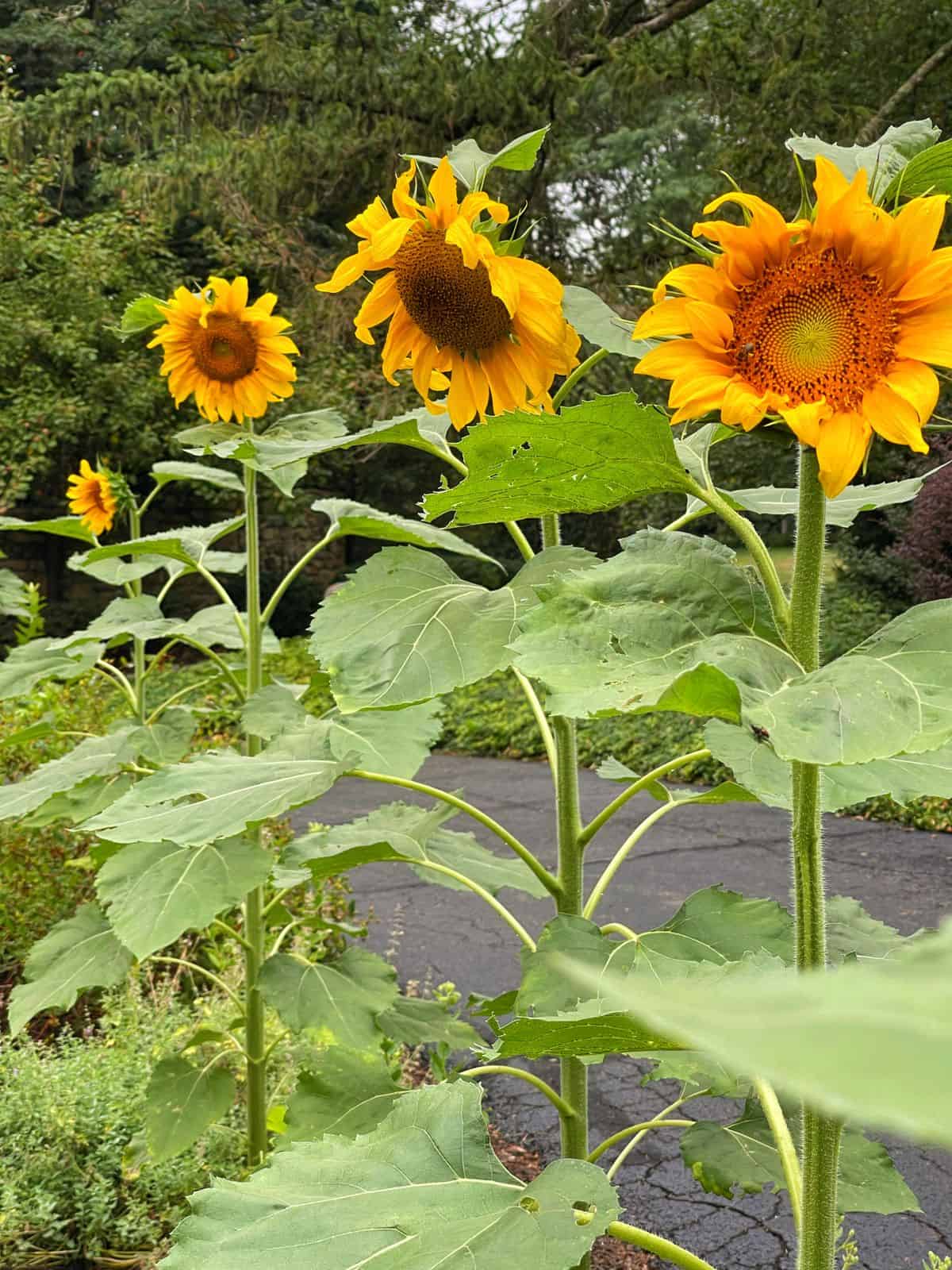
How to Grow Cucumbers: Harvesting Cucumbers
Harvest cucumbers when they are the desired size. Note: if you leave very large cucumbers on the vine, the overall yield will decrease. So harvest accordingly.
When harvesting, be careful not to disturb the vine so you don’t damage new growth. I like to use pruners like THESE to harvest fruit in a snap.
Growing Tip: avoid harvesting cucumbers after rain or when the plant is wet to avoid spreading disease.
Storing Freshly Picked Cucumbers
To store, keep in a cold refrigerator or basement that is 55 degrees. Not sure what to do with your harvest? Consider pickling the cucumbers to store for year-round use. I’ve never done this before, but would love to try this year!

Using Your Cucumbers: A Collection of My Favorite Cucumber Recipes
Cucumbers are not only refreshing and nutritious but also incredibly versatile in the kitchen. From crisp, cool salads to tangy pickles and creative appetizers, there are countless ways to enjoy this garden favorite.
In this section, I’ll share some of my favorite cucumber recipes that highlight their crisp texture and subtle flavor. Whether you’re looking for a quick snack, a side dish for your summer BBQ, or a unique addition to your meal, these recipes will inspire you to make the most of your cucumber harvest. Get ready to discover delicious new ways to enjoy cucumbers in your daily meals.
Cucumber Salad with Dill Recipe
When cucumbers are in season, there is nothing better than dropping sliced cucumbers in a fresh green salad. But wait until you try this cucumber salad with dill recipe! It is so fresh and delicious, and pairs well with any grilled dish.

Cucumber, Tomato, and Onion Salad Recipe
But I also love this simple recipe for cucumber, tomato, and onion salad. It is so light and refreshing to make in summer. Plus it pairs well with any summer barbeque or low country boil dinners.
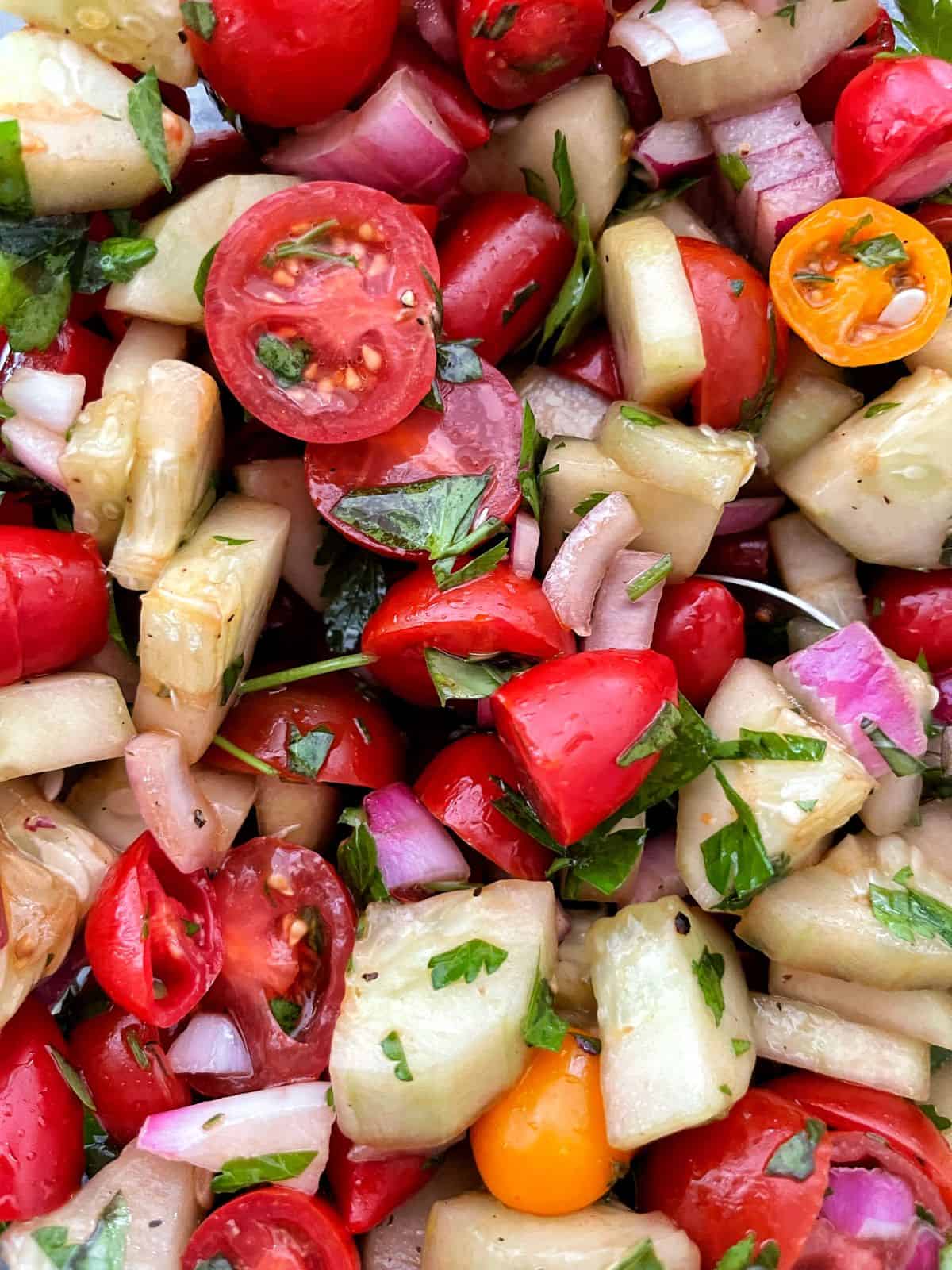
Cucumber Sandwich with Cream Cheese Recipe
And if you are looking for a light and tasty sandwich, try this refreshing cucumber sandwich with cream cheese recipe. Cucumber sandwiches are one of my favorites to enjoy. They are perfect for any brunch, tea party or picnic!
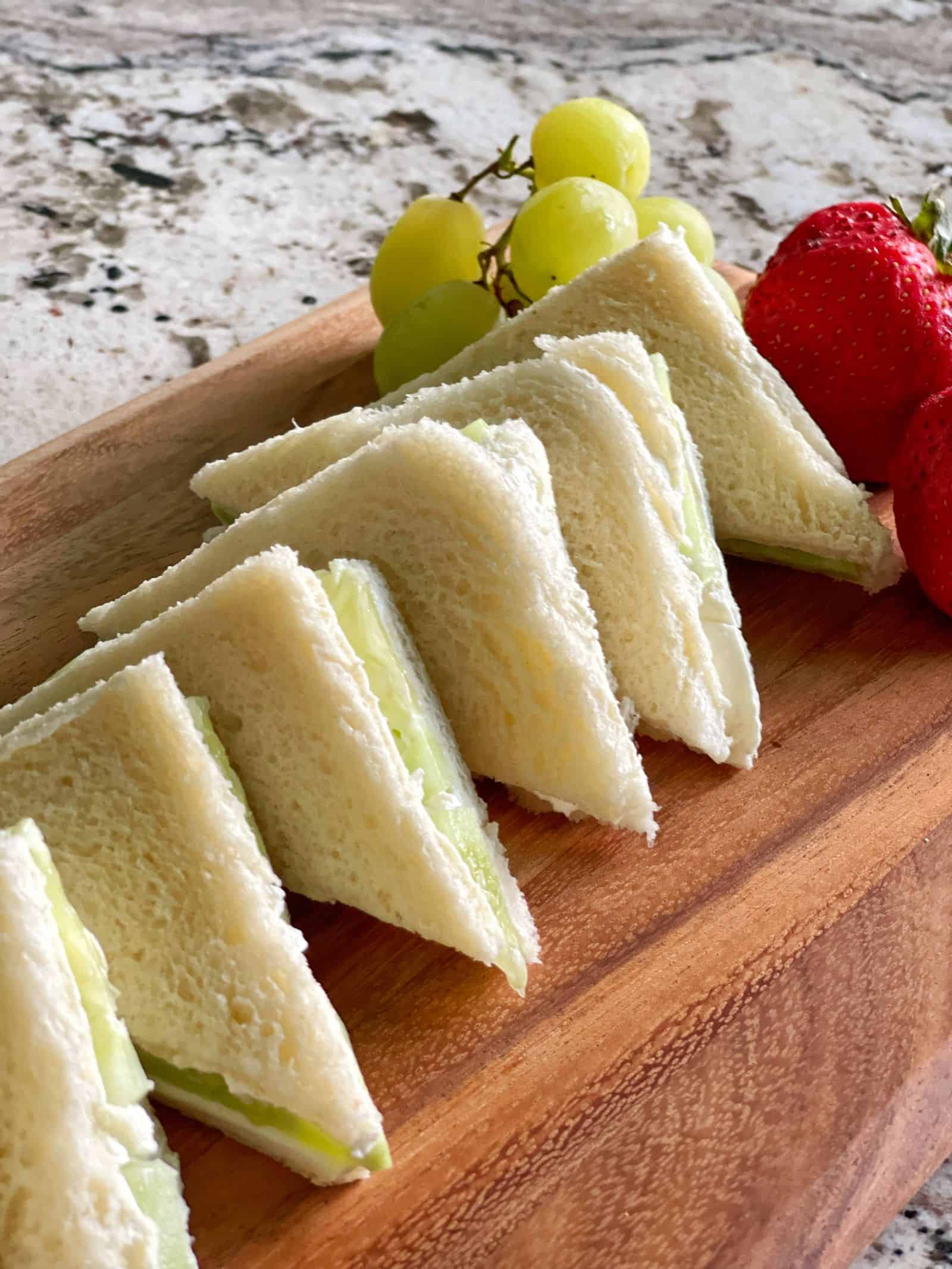
FAQ: Growing Cucumbers
What is the best time to plant cucumber seeds?
The best time to plant cucumber seeds or transplants is after the last frost date in your area when the soil temperature is consistently above 70°F (21°C). This ensures optimal germination and growth.
Can cucumbers grow in containers?
Yes, cucumbers can grow well in containers. Choose bush varieties or compact cultivars for container gardening. Ensure the container is at least 12-18 inches deep and wide, and provide a trellis or support if growing vining types.
How do I prevent cucumber plants from getting bitter fruit?
Bitter cucumbers are often a result of irregular watering or stress. Ensure consistent watering, provide mulch to maintain soil moisture, and avoid letting the plants dry out. Additionally, planting varieties known for being less bitter can help.
How do I hand-pollinate cucumber plants?
If pollinators are scarce, you can hand-pollinate cucumber plants. Use a small brush or cotton swab to transfer pollen from the male flowers (which have a thin stem) to the female flowers (which have a small fruit at the base).
Why are my cucumber leaves turning yellow?
Yellowing leaves can be caused by several factors, including nutrient deficiencies (especially nitrogen), overwatering, poor drainage, or diseases like powdery mildew. Assess your watering practices and consider soil amendments or fungicides if necessary.

Final Thoughts on How to Grow Cucumbers
Aside from juicy garden tomatoes, cucumbers are a close second for me. Love to grow them in my vegetable garden. Love to eat them. And I wish the season lasted longer here in my zone 6b Jersey garden.
Growing cucumbers in your garden can be a highly rewarding experience, offering a plentiful supply of fresh, crisp vegetables that are perfect for a variety of dishes. By following best practices for soil preparation, planting, and care, you can ensure a healthy and productive cucumber crop. Remember to water consistently, manage pests and diseases proactively, and provide proper support for your plants to thrive.
Gardening is a journey of learning and experimentation, so don’t be afraid to try different methods and techniques to see what works best in your specific environment. With patience and attention to detail, you’ll be enjoying your homegrown cucumbers in no time.
Ready to grow your own cucumbers? Start by preparing your garden with the tips shared in this guide.
If you have any questions or need more personalized advice, feel free to reach out in the comments section below. Don’t forget to subscribe to my newsletter for more gardening tips and recipes straight to your inbox. Happy gardening!
To learn more about growing cucumbers, check out this article from the University of Connecticut Cooperative Extension.
Thanks for stopping by the blog today!
Enjoy your day! xoxo



